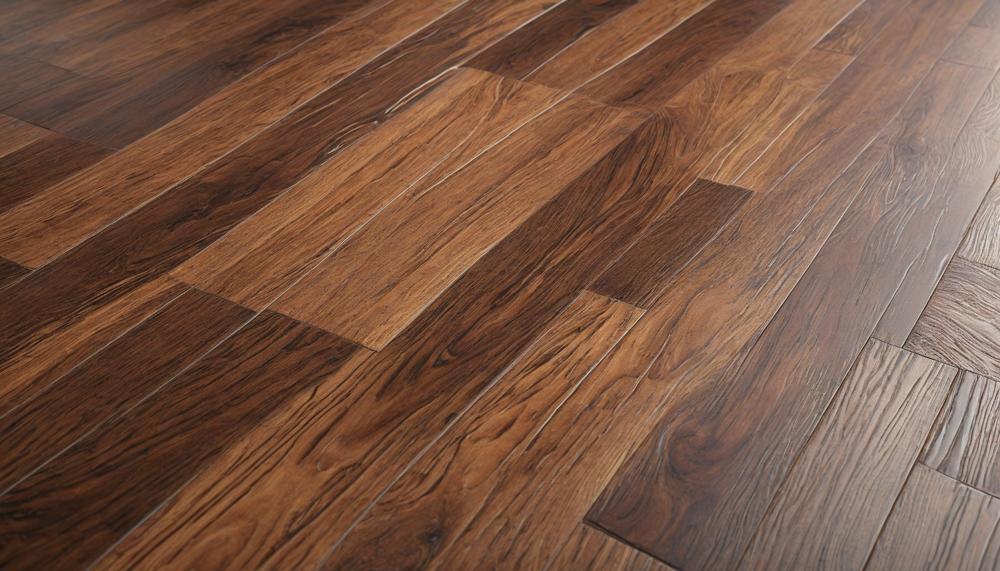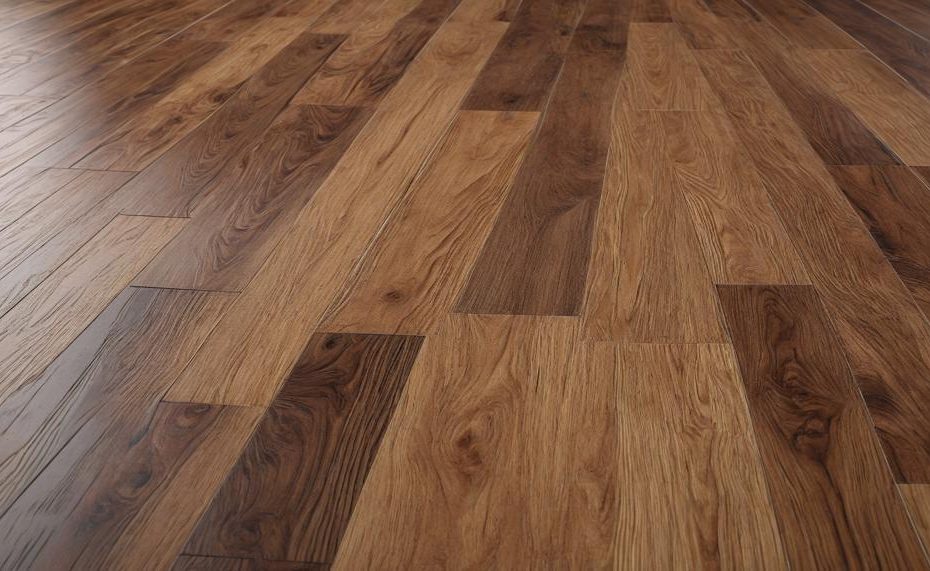Yes. Removing glued flooring might not sound like a fun task, but it’s definitely doable. Whether you’re dealing with vinyl, hardwood, or laminate, the glue holding your flooring in place can be a challenge. Yet, with the right approach, you can successfully lift that old flooring and prepare your space for a fresh start.
The key takeaways to remember are:
- Preparation is crucial: Start by cutting the flooring into manageable sections to make removal easier.
- Soften the glue: Use a mix of warm water and soap to soften the glue, making it easier to scrape off.
- Tools matter: A utility knife, scraper, and elbow grease will be your best friends in this process.
- Patience is a virtue: Removing glued flooring can be time-consuming, but persistence pays off.
Ready to take on the challenge? Keep reading for a detailed step-by-step guide to make this task as smooth as possible.
Table of Contents
- 1 How to Remove Glued Wood Flooring
- 2 How to Remove Glued Wood Flooring on Concrete – Video
- 3 DIY Steps For Removing Glued Wood Flooring From Concrete
- 4 How to Dispose of Old Wood or Engineered Hardwood Flooring
- 5 Can You Burn Old Wood Flooring or Engineered Flooring?
- 6 How to Remove Glued Wood Floors
- 7 Conclusion
How to Remove Glued Wood Flooring
When removing glued wood flooring, it is important to have the necessary tools and materials, watch a demonstration video, and plan ahead for transportation and lifting of rental equipment.
Begin by prying up one end of the plank using a pry bar and hammer, then use a scraper or adhesive remover to loosen and remove any remaining glue.
Repeat this process for each plank until all are removed, and then clean up any leftover debris or glue from the floor before proceeding with renovations.
Additional tips include being cautious when prying up planks to avoid damaging them, using one of six methods to remove excess glue on concrete floors, and considering whether it is more efficient to remove the flooring without renting a power tool.
How to Remove Glued Wood Flooring on Concrete – Video
To effectively remove glued wood flooring on concrete using the methods shown in the video, follow these steps:
Prepare Your Tools and Workspace
Gather necessary tools: pry bar, mallet, utility knife, floor scraper, and safety gear (gloves, goggles, mask).
Clear the room of furniture and other obstructions to allow easy access to the flooring.
Identify the Longest Planks
Start with the longest planks that are not interconnected with others. This will create space and make the process smoother.
Score the Flooring
Use a utility knife to score the flooring into manageable sections, approximately 12 inches wide. This makes lifting the planks easier.
Pry Up the Flooring
Insert the pry bar under the edge of the plank and gently tap it with a mallet to loosen the plank from the adhesive. Gradually work your way along the length of the plank.
Remove Adhesive Residue
Once the planks are removed, use a floor scraper to tackle the adhesive residue left on the concrete. For stubborn glue, apply a mixture of warm water and soap to soften it, then scrape it off.
Consider Power Tools for Larger Areas
For extensive areas, renting a power tool like a floor scraper from a local rental company might be beneficial. Plan ahead for transporting and handling heavy equipment.
DIY Steps For Removing Glued Wood Flooring From Concrete
| Step | Instructions | Tools Needed |
| Prepare the Area | Clear the room of all furniture and other items. Ensure you have protective gear such as gloves, safety glasses, and a dust mask. | Protective gear, Empty room |
| Start with the Longest Unconnected Planks | Locate the longest unconnected planks and begin lifting them using a pry bar and mallet. Insert the pry bar under the plank and gently tap with the mallet to loosen it. | Pry bar, Mallet |
| Remove Planks | Carefully pull up the loosened planks. If they resist, use the floor scraper to cut through the adhesive underneath. Work slowly to avoid breaking the planks or damaging the concrete. | Floor scraper |
| Deal with Stubborn Adhesive | For areas with stubborn adhesive, consider renting a power tool like a floor scraper machine. Follow the rental company’s instructions for operation. | Rental floor scraper machine |
| Clean the Concrete Surface | Once all the planks are removed, use the scraper to clean off any remaining adhesive. Sweep or vacuum the area to remove debris and dust. | Sweeper or Vacuum, Floor scraper |
| Final Inspection | Inspect the concrete for any remaining adhesive spots. Use a hand scraper to remove any leftover adhesive, ensuring the surface is smooth and clean. | Hand scraper |
For more detailed instructions and visual guidance, consider watching a helpful video tutorial on the process.
By following these steps meticulously, you can efficiently remove glued wood flooring from concrete without causing unnecessary mess or damage.
How to Dispose of Old Wood or Engineered Hardwood Flooring
When dealing with old wood or engineered hardwood flooring that has been glued down, follow these steps:
Assess the Adhesive Type
Identify the adhesive used. Commonly, polyurethane adhesive is used, known for its robust bond. Knowing the adhesive type helps in selecting the appropriate removal technique.
Cut the Flooring

Use a circular saw to cut the flooring into manageable sections. Set the saw to just the thickness of the flooring to avoid cutting into the subfloor. Wear safety gear to protect against dust and debris.
Pry Up the Sections
Insert a pry bar under each section and lift to detach the flooring from the subfloor. This can be labor-intensive, especially if the adhesive is strong. For stubborn areas, a hammer and chisel can assist in breaking the bond.
Remove Remaining Adhesive
Use an oscillating tool with a scraping attachment or a floor scraper to remove residual adhesive from the subfloor. Apply a mixture of warm water and soap to soften any remaining glue, making it easier to scrape off.
Disposal
Break down the flooring into smaller pieces for easier disposal. Check with local waste management services to see if there are special requirements or recycling options for wood or engineered wood materials.
Safety Precautions
Always wear protective equipment, including gloves, goggles, and a dust mask. Ensure the workspace is well-ventilated to avoid inhaling dust or fumes from adhesives.
Can You Burn Old Wood Flooring or Engineered Flooring?
Burning old wood flooring or engineered flooring is not safe and is strongly discouraged. This practice releases toxic fumes and hazardous substances into the air, posing serious health risks and environmental harm.
Explanation:
| Reason | Details | Alternatives |
| Toxic Emissions | Burning engineered wood flooring releases harmful chemicals like formaldehyde and other volatile organic compounds (VOCs) due to the adhesives and finishes used in its manufacturing. | Recycle or repurpose the wood. Consider donating usable pieces to local charities or reuse centers. |
| Health Risks | Inhaling the fumes can cause respiratory issues, eye irritation, and long-term health problems. This is particularly dangerous for children, elderly individuals, and those with pre-existing health conditions. | Contact local waste management facilities for safe disposal options. They can provide guidance tailored to your area’s regulations. |
| Environmental Impact | The release of pollutants contributes to air quality degradation and can harm local wildlife and vegetation. | Use the wood in DIY projects or as reclaimed wood for new constructions, preserving its life and reducing waste. |
| Legal Restrictions | Many regions have strict regulations against burning treated or engineered wood due to the risks involved. Non-compliance can result in fines or legal actions. | Consult local recycling centers for drop-off locations or pick-up services that handle construction materials. |
| Property Damage | Burning such materials in backyard fire pits or chimineas can damage heating systems and cause uncontrolled fires, leading to property damage. | Check with local governments for community programs that accept and recycle old building materials. |
How to Remove Glued Wood Floors
Removing glued wood floors can be a time-consuming and tedious task, but with the right tools and techniques, it can be done effectively. Here are the steps involved in removing glued wood floors:
Gather Necessary Tools and Materials:
Before starting the removal process, make sure you have all the necessary tools and materials.
This includes a utility knife, pry bar, hammer, floor scraper, adhesive remover, safety goggles, and gloves.
Start with the Longest Unconnected Planks:
To make the process easier, start with the areas that have the longest unconnected planks.
This will allow you to remove larger sections of flooring at once without creating a mess or extra work.
Take Your Time:
Removing glued wood floors requires patience and attention to detail.
Take your time and work slowly to avoid damaging the subfloor or creating a bigger mess.
Consider Renting a Power Tool:
If you are removing flooring in multiple rooms or have a large area to cover, consider renting a power tool such as a floor scraper or sander.
This will make the process faster and more efficient.
Watch Video Tutorials:
For a visual demonstration and clarification of the steps involved in removing glued wood floors, consider watching video tutorials.
This can also provide helpful tips and techniques for a smoother removal process.
Remove Any Remaining Adhesive:
After removing the flooring, there may still be adhesive residue left on the subfloor.
Use recommended methods such as warm water and soap or adhesive remover to soften and remove the remaining glue.
Use Caution When Handling Power Tools:
When using heavy power tools, always exercise caution and follow safety precautions.
Plan accordingly for transportation if you need to rent a power tool for the removal process.
By following these steps, you can successfully remove glued wood floors without causing damage to your subfloor or creating unnecessary mess.
Conclusion
Removing glued flooring is certainly a challenging endeavor, but it is achievable with the right preparation and tools. The process involves several key steps, starting with cutting the flooring into manageable sections to simplify the task. Softening the glue with warm water and soap can make it easier to scrape off, requiring tools like a utility knife, scraper, and a hefty amount of patience.
When tackling glued wood flooring, it’s crucial to begin by prying up the planks carefully to avoid damage. Tools such as a pry bar, hammer, and adhesive remover will be indispensable. Depending on the size of the area, renting power tools might be a wise choice to expedite the process. Safety precautions, including protective gear and ensuring proper ventilation, are essential to mitigate risks.
The effort invested in removing glued flooring pays off when the old flooring is lifted, and the area is thoroughly cleaned and prepped for new installations. While the task can be labor-intensive, the satisfaction of a job well done and a space ready for a fresh start makes it worthwhile.






